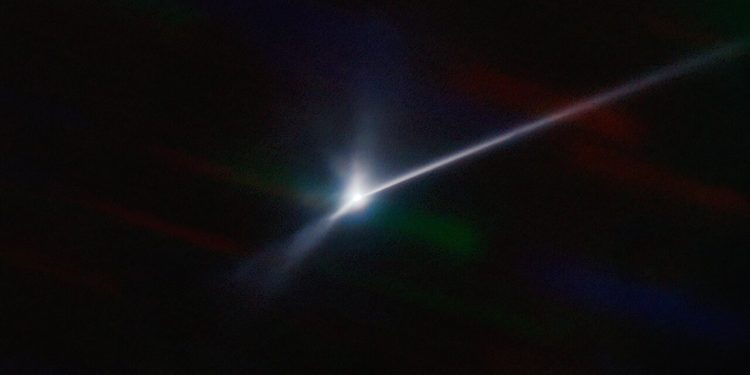In an era of space exploration and planetary defense, scientists are constantly exploring ways to protect Earth from cosmic threats. One particularly intriguing idea is using a nuclear explosion to deflect a potentially catastrophic asteroid. Recent laboratory experiments suggest that this bold plan could indeed save our planet from a life-threatening asteroid impact in the future.
Asteroids of all sizes orbit the sun, and while most pose no immediate danger, the threat of a large asteroid colliding with Earth is real. The Chicxulub asteroid, which struck Earth 66 million years ago, is thought to have wiped out the dinosaurs and caused mass extinction by plunging the planet into darkness and triggering devastating tsunamis. To prevent a similar disaster, scientists are working on various asteroid deflection strategies.
One method that has gained attention involves using nuclear weapons. This concept, often seen in movies like Armageddon (what a movie, eh?), where a team saves Earth by destroying an asteroid, might not be pure Hollywood fiction after all. Scientists are seriously considering the possibility that a nuclear blast could prevent an asteroid from striking Earth—if executed with precise timing.
Testing the Theory in the Lab
In a groundbreaking experiment, researchers at Sandia National Laboratories in New Mexico explored this theory by blasting X-rays at a marble-sized asteroid model, testing how nuclear-generated energy could influence its trajectory. X-rays simulate the energy output of a nuclear explosion, and the results were promising. When the mock asteroid’s surface vaporized under the intense energy, the material’s ejection propelled the asteroid in the opposite direction, mimicking a rocket engine.
This experiment marks the first time scientists have directly tested how X-rays from a nuclear explosion might affect an asteroid. According to Nathan Moore, the study’s lead author, the experiment demonstrated that a nuclear explosion could deflect an asteroid up to four kilometers wide, provided we have advanced notice.
Learning from Past Successes
In 2022, NASA’s DART mission made headlines when it successfully deflected the small asteroid Dimorphos by crashing a spacecraft into it. However, while this approach worked for smaller asteroids, scientists believe that larger objects may require more force, and a nuclear detonation could provide the necessary power.
Dimorphos, as it turns out, is not a solid rock but a loosely held-together pile of rubble. This variability in asteroid composition makes it challenging to predict how different deflection methods will work across various asteroid types. The European Space Agency’s upcoming Hera mission aims to investigate Dimorphos further, offering insights that could refine future asteroid defense strategies.
The Challenges Ahead
Despite the potential of nuclear deflection, many hurdles remain. Asteroids come in a variety of compositions and structures, from solid rocks to loose rubble, each requiring a different approach. The idea of detonating a nuclear bomb in space is also fraught with legal, ethical, and practical challenges, as international treaties currently ban nuclear tests in space.
Moreover, even with a successful nuclear deflection, the logistics of placing a bomb close enough to an asteroid are daunting. The bomb would need to be positioned just a few kilometers away from the asteroid, far from Earth, but with enough proximity to push the object off its collision course.
Looking to the Future
Asteroid deflection is still in its experimental phase, but scientists are optimistic. Nuclear deflection may never be the first choice for planetary defense, but it could serve as a last-resort solution for larger, more dangerous asteroids. However, the success of such missions hinges on early detection. The larger the asteroid, the more time humanity will have to prepare—and the more viable nuclear deflection becomes as a safeguard for our planet.
Mary Burkey, a scientist at Lawrence Livermore National Laboratory, emphasized the importance of continuing this research, stating that it’s crucial to have contingency plans in place. As space agencies and researchers work to develop a multi-layered defense strategy, one thing is clear: the future of Earth’s safety might rest on a combination of science, timing, and innovative technology.










